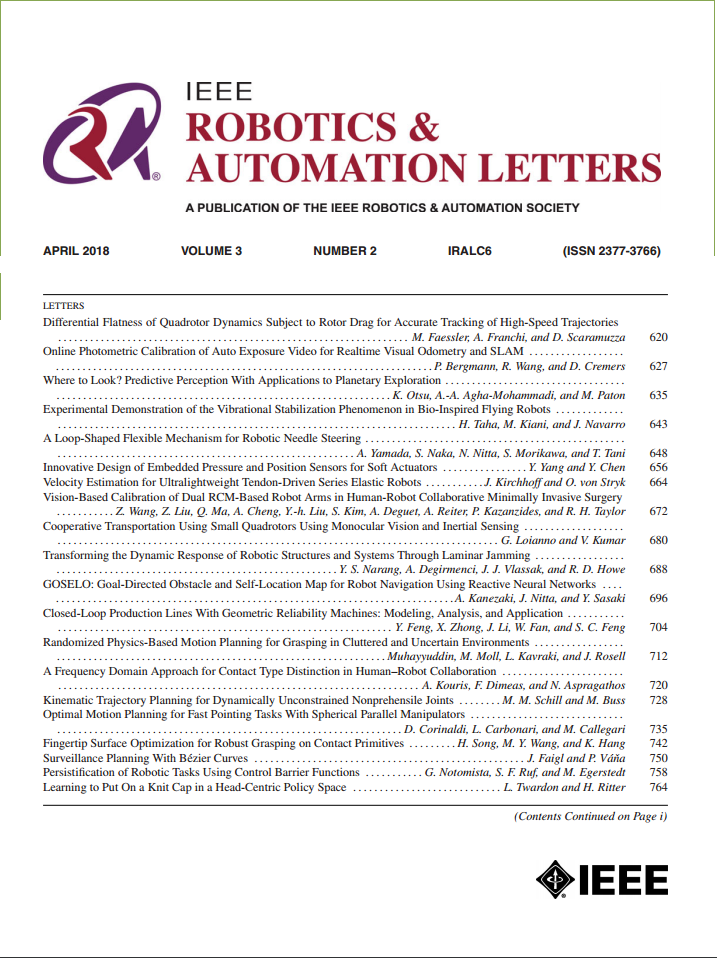I2D-LocX: An Efficient, Precise and Robust Method for Camera Localization in LiDAR Maps
IF 5.3
2区 计算机科学
Q2 ROBOTICS
引用次数: 0
Abstract
Camera localization within LiDAR maps has gained significant attention due to its potential for accurate positioning with low-cost and lightweight sensors compared to LiDAR-based systems. However, existing methods often prioritize localization accuracy, sometimes compromising efficiency, which can limit their suitability for real-time applications. To address these issues, we propose I2D-LocX, a lightweight monocular camera localization framework with three branches, establishing pixel-level and feature-level constraints to enhance localization performance without increasing model complexity. Specifically, the main branch generates a flow map to represent pixel-point displacements. One auxiliary branch shares the same input as the main branch and employs an additional decoder to evaluate the confidence of the flow map. The other auxiliary branch leverages a zero-flow generated from the displacement-free input to guide feature matching, thereby enhancing localization robustness. Notably, both auxiliary branches share parameters with the main branch and are omitted during inference, ensuring computational efficiency. Extensive experiments on benchmark datasets, including KITTI-Odometry, Argoverse, Waymo, and nuScenes, show that I2D-LocX can achieve centimeter-level localization accuracy with about 37 ms inference time, greatly improving the localization performance for real-world applications.I2D-LocX:一种高效、精确、鲁棒的激光雷达地图相机定位方法
与基于激光雷达的系统相比,激光雷达地图中的相机定位由于其具有低成本和轻质传感器的精确定位潜力而获得了极大的关注。然而,现有的方法往往优先考虑定位精度,有时会影响效率,从而限制了它们对实时应用的适用性。为了解决这些问题,我们提出了I2D-LocX,一个具有三个分支的轻量级单目相机定位框架,建立了像素级和特征级约束,在不增加模型复杂性的情况下提高定位性能。具体来说,主干生成一个流图来表示像素点位移。一个辅助分支与主分支共享相同的输入,并使用额外的解码器来评估流程图的置信度。另一个辅助分支利用无位移输入产生的零流来引导特征匹配,从而增强定位鲁棒性。值得注意的是,两个辅助分支与主分支共享参数,并且在推理过程中被省略,从而保证了计算效率。在KITTI-Odometry、Argoverse、Waymo和nuScenes等基准数据集上进行的大量实验表明,I2D-LocX可以在37 ms左右的推理时间内实现厘米级的定位精度,大大提高了实际应用中的定位性能。
本文章由计算机程序翻译,如有差异,请以英文原文为准。
求助全文
约1分钟内获得全文
求助全文
来源期刊

IEEE Robotics and Automation Letters
Computer Science-Computer Science Applications
CiteScore
9.60
自引率
15.40%
发文量
1428
期刊介绍:
The scope of this journal is to publish peer-reviewed articles that provide a timely and concise account of innovative research ideas and application results, reporting significant theoretical findings and application case studies in areas of robotics and automation.
 求助内容:
求助内容: 应助结果提醒方式:
应助结果提醒方式:


